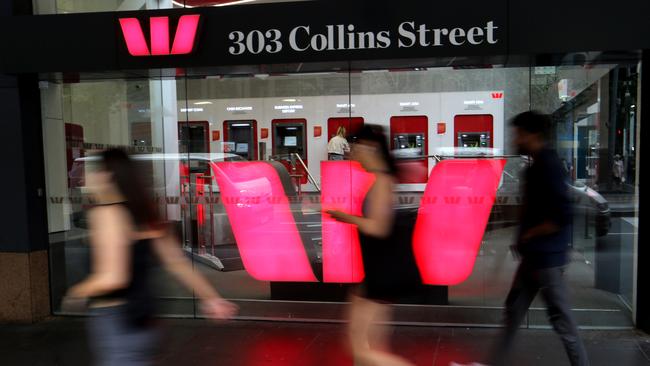Banks to feel margin squeeze from rate cut
The squeeze on bank profit margins will be further tightened after all the big four lenders announced they would pass on the Reserve Bank rate cut in full.

The squeeze on bank profit margins will be further tightened after all the big four lenders announced on Tuesday they would pass on the Reserve Bank rate cut in full.
The majors have more than $400bn in deposits earning less than 25 basis points in interest, restricting their ability to cushion the impact of lower lending rates by slashing deposit rates.
While hedging and replicating portfolios are used to mitigate the impact of falling rates, the strategies become less effective as rates fall further.
Commonwealth Bank has the nation’s largest pool of deposits, with $160bn earning less than 25 basis points. National Australia Bank is next ($88bn), followed by Westpac ($80bn) and ANZ Bank ($76bn). Analysts said it was impossible to calculate the impact on industry profitability of Tuesday’s 25 basis point cut in the cash rate and the industry’s pricing moves because there are too many moving parts.
However, CBA said at its half-year result in February that its net interest margin would narrow from 2.11 per cent by five basis points in the second half of this financial year as a result of residual pain from last year’s rate cuts in June, July and October.
The margin would compress by a further four basis points in 2021, with additional pressure to come from hot competition in home lending.
Macquarie Research said late last month that the majors were offering cashbacks in the range of $2000-$4000 to customers looking to refinance mortgages, equating to a variable-rate discount of 10-20 basis points.
Despite these inducements, the majors, apart from CBA, were continuing to lose market share, with balances contracting for Westpac, NAB and ANZ.
“These trends suggest that volume growth expectations for the majors remain high, and banks will need to continue to compete aggressively to contain outflows,” the report said.
UBS analyst Jon Mott has estimated that every 1 basis point reduction in the sector’s interest margin eroded earnings per share by 0.9 per cent.
The RBA said it had slashed the cash rate to a record low of 0.5 per cent to support the economy as it responded to the global coronavirus outbreak.
The virus, it said, had clouded the near-term outlook for the global economy, so that growth in the first half of this year would be lower than expected.
Before the outbreak, there were signs that the slowdown which started in 2018 was coming to an end.
While it was too early to tell when the trend would improve, expansionary policy measures had been announced in several countries, including China.
The RBA said Australia’s financial markets were operating effectively, and it would make sure that the banking system had sufficient liquidity.
It was prepared to further ease monetary policy to support the economy. Morgan Stanley analyst Richard Wiles said in a report that the pain from the coronavirus would spread to the banks’ bad debt line, with higher loan losses expected in sectors like tourism, education, retail, manufacturing and mining and construction.
Weaker business conditions and a rise in unemployment would also cloud the outlook.
“We estimate that the tourism,eduction, retail and wholesale trade, construction, manufacturing and mining industries account for around 10 per cent of total exposures and around 20 per cent of non-mortgage exposures on average at the major banks”.
Based on Pillar 3 disclosures, which focus on credit and operational risk, Mr Wiles said Westpac appeared to have the biggest exposure to vulnerable sectors, with CBA the least exposed.
In an earlier assessment, the investment bank said the coronavirus was likely to have a much larger impact on the economy than the bushfires.
If this eventuated, central banks were expected to extend their easing cycles, with further fiscal expansion likely to be pursued.
Several banks including Westpac and HSBC have outlined support measures for businesses customers feeling the squeeze from coronavirus fallout. This includes deffered business loan repayments for up to three months and early access to term deposits.
Major bank shares ended lower with CBA shares down 1.7 per cent, Westpac was down 1.1 per cent and ANZ was off 1.4 per cent.


